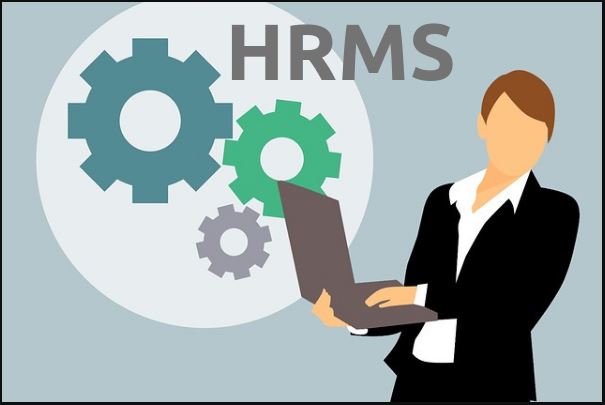How Does HRMS Help in Remote Employee Management?

Employee feedback is a crucial part of employee engagement. Timely feedback helps the employee understand their shortcomings and improve themselves. Using performance review phrases can make this process more structured and effective. These kinds of small changes would lead to greater changes in the company, which is vital for the success of any organization. However, providing feedback for remote employees proves difficult with the lack of proper tools to convey the required information.
With the world moving towards complete remote working and hybrid work environments, HRs all over the world are pondering over the multitude of changes and the associated challenges. In this scenario, an Human Resource Management Software proves to be quite a useful tool to keep their employees engaged, even when they are working remotely.
Having an employee management system such as an HRMS not only helps in improving the efficiency of the HR but also lets them engage their employees in a manner that is quite frankly, nearly impossible even with face-to-face communication. And so, let us look at the various ways an HRMS aids in remote employee management.
What is Human Resource Management Software (HRMS)?
Simply put, a Human Resource Management Software or HRMS is a solution that helps in improving the efficiency of the human resources department of an organization. It helps them streamline their tasks and enhancesemployee engagement, thereby improving the overall workforce of a company.
With the help of a cloud-based HRMS, HRs can manage their employees remotely. In the pandemic-stricken world, such a solution has become the need of the hour. With the world steadily moving towards permanent hybrid and remote working patterns, the humble HRMS is set to play an even greater role in managing the employees effectively.
What is ‘Remote Employee Management’?
Remote working is the term used to define the employees who are working from a physical location different from their office. Although this kind of work is preferred by several employees, it becomes a nightmare for the HR department since they are unable to manage their employees effectively in this scenario.
Hence, ‘remote employee management’ tactics are often applied by the human resources team. With the rise of hybrid and remote working due to the pandemic, multiple companies have opted to deploy a comprehensive HRMS platform to effectively manage their remote employees.
The supervisors can view their staff member’s login and logout details, approve their leave requests, manage their payroll and associated statutory benefits, view reports, etc. using the intuitive user interface of the HRMS. Similarly, the employees can also request leaves, register attendance regularization requests, check leaves balance, download payslips, and much more using robust employee management software.
How Does HRMS Help in Remote Employee Management?
The functions mentioned above are a fraction of the abilities of an HRMS. Modern HRMS solutions are so advanced that it seems as if you have 24/7 access to virtual HR with the help of an ESS portal and the accompanying mobile app.
To better understand this phenomenon, let us take a closer look at the various ways an employee management software helps in remote employee management:
1. AutomatesRepetitive HR Tasks
If you asked me to give a short answer to the question, what does an HRMS do, I would say, ‘It automates the HR processes and streamlines the process of employee management’. HRs are tasked with multiple mundane clerical tasks which take up a lot of their productive hours. Some examples of these repetitive tasks include onboarding, recruitment, managing payroll, etc. which consume a lot of time and resources.
A good employee management system will free the HR from such routine activities, thereby aiding them in improving their workplace and increasing employee engagement activities such as process streamlining, improving training sessions, reinforcing company culture, implementing an effective reward system, etc.
2. Removes Human Errors
Since we are talking about automation, let me talk about its positive side-effect: the elimination of ‘human’ errors. A well-implemented robust employee management software would not only help in eliminating any kind of common human errors but also improve the speed and effectiveness of the tasks.
The removal of human errors also ensures that the tasks can be completed on time. Time-bound responsibilities such as payroll disbursal, attendance management, timesheet management, interview scheduling, etc. benefit a lot due to the avoidance of human mistakes as even minor delays in the normal functioning of these processes might lead to huge losses in time and money down the line.
3. Simplifies Remote Onboarding
Employee onboarding is crucial for a new employee as their onboarding has a considerable impact. This impact tends to be weaker in the case of remote onboarding since the new hire is unable to interact with their team members and the HR.
However, with the help of an HRMS platform, the HR can streamline the process of onboarding by helping the new hire upload their documents, add their personal and professional details, upload their tax-related information, etc. which makes the process effortless for the new hire to complete remotely. Multiple companies have also embraced the paperless onboarding practices popularized by HRMS platforms to streamline the whole process.
4. Makes Attendance Precise
Attendance management has been traditionally an error-prone endeavour due to the way it has been captured. Before the advent of computers and digitization, employee attendance was captured using punch cards and later, with registers. However, both options were error-prone and susceptible to malpractices while also being impossible to implement in a remote working environment.
On the other hand, with the robust attendance management module of HRMS, you will be able to easily capture the employee attendance utilizing the available hardware such as their smartphones and ensure that the captured data is tamper-proof with the help of a secure database used in storing this data. This seamless attendance experience eventually translates to improved employee engagement even among remote employees.
5. Facilitates Smoother Feedback
Employee feedback is a crucial part of employee engagement. Timely feedback helps the employee understand their shortcomings and improve themselves. These kinds of small changes would lead to greater changes in the company, which is vital for the success of any organization. However, providing feedback for remote employees proves difficult with the lack of proper tools to convey the required information.
An intuitive HRMS platform would have all the necessary tools to highlight the employees’ performance attributes as well as provide regular feedback. It provides the supervisor with an option to publicly reward the employee for their hard work, while also reprimanding them privately for their shortcomings.
6. Streamlines Leave Management
Due to hostility towards cheap labour which was prevalent in a long bygone era, employees still feel awkward applying for leaves. It used to be the case that the employee couldn’t request leave without facing some backlash from their supervisor. However, times have changed and so has the point of view of the managers and supervisors.
Remote employees can thank the HRMS particularly for making the process of leave application swift and easy. The leave management module of Human Resource Management Software helps the employees understand their leave balance as well as apply for the same with their manager. They can provide the reason for the leave and other relevant details to ensure that it is granted within no time. This kind of leave management streamlining helps in greatly improving their morale and retention rate.
7. Provides Remote ESS Options
Employees nowadays are accustomed to Employee Self-Service (ESS) portals. Every company has one and it is easy to use as well as provides all the necessary information for the employee. It also acts as a document repository for the employee which can be accessed anywhere anytime.
Reads More: Best WordPress Plugin for Increase Website Loading Speed
Having an ESS portal proves especially useful for remote employees as they can access their employment-related data from anywhere. Modern HRMS even provide access to the ESS portal even on a smartphone with the help of a dedicated mobile app to ensure that the employee always stays connected with the company. This kind of interactivity helps the employee realize their value for the company while also helping the HR provide accurate details irrespective of the physical distance between them.
8. Provides Centralized Database
Since the ESS portal provides a user interface for the employees to share their information with the company and HR, this information can be stored in a safe centralized database. The employee can update it whenever required and the HR can approve it to ensure that there is no misinformation in the database.
This kind of centralized database with remote access provides the employees and HR with much-needed database integrity since it can be accessed only with the help of correct credentials. Additionally, as the database is secured with the help of encryption, it becomes useless to a hacker even in cases wherein a human error might lead to the system being compromised.
Summary
To summarize, HRMS platforms are vital for streamlining and improving the efficiency of the human resources department of any company. With the help of a robust Human Resource Management Software, the HR department can change the employer branding of their company in a very short time by improving every aspect of their organization.
This kind of interactivity is a necessity in the current pandemic scenario as it helps in actively engaging the remote staff and helping them in realizing that their company values them and are doing their best to ensure the best for their employees.
Author Bio:
John Paul Davis is a content writer with Pocket HRMS, an innovative cloud-based HR software provider in India with over a decade of loyal clientele. His handiwork usually reflects the latest technologies in the HR domain.






